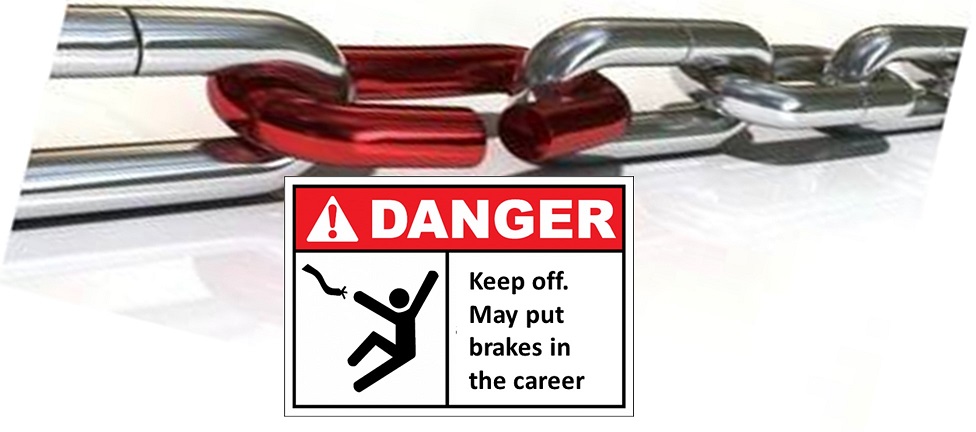In the previous post I explained why Innovations are always top-down. They are never bottom up. I also explained that every manager is at the top of his/her organization and hence can drive innovations. CEO is as at the top of the whole organization. Vice Presidents are at the top of their teams, head of a manufacturing plant is the decision maker for his/her plant. Similarly, the head of maintenance is at the top of maintenance function, the store manager at a small retail shop is at the top of the store operations. Finally, at the individual level, the person is at the top of his/her own work process! Therefore, every person can drive and implement innovations in the area that is under his/her control.
I also explained that there are some exceptions in which a person responsible for an area is not able to drive innovation. The key reason is the mismatch between the risk appetite of the manager and the risk involved in the innovation.
Innovations in bottleneck processes
We know that every process has a bottleneck (constraint) because of which it is not able to deliver more in terms of quantity or better in terms of quality. Let us take a typical production process as an example. Bottlenecks in production processes are not very difficult to spot intuitively. One would typically find inventory piled up in front of the bottleneck process. The senior management knows the bottleneck and have all their eyes and ears on it. In such situations, no one including the person responsible for the production process, would like to take risk of trying something new in the existing process to debottleneck it. This is because the downside of failed experiments will be considered very high because the opportunity loss due to the time spent in carrying out experiments is very high for bottleneck processes. In such situations, the manager who owns the bottleneck process looks for the support of higher level manager to carry out experiments to debottleneck. Higher the intensity of the bottleneck, higher would be the urge to involve the senior management and higher would be the level of senior management who would give the approval.
This further strengthens my original point that ‘innovations are always top-down’ and I would like to refine it further – ‘Innovations are always top-down but innovations in bottleneck processes need a higher-level top’.
Innovations in non-bottleneck processes
On the other hand, process innovation in a non-bottleneck area can be driven by the lowest level manager who owns the area/process. If such innovations are targeted to increase the throughput, they result in incremental innovations with low impact because the bottleneck is somewhere else. In these areas, innovation that improve the overall product quality or help in debottlenecking the bottleneck process may create a larger impact. The only reason for innovations not thriving in non-bottleneck areas is the unwillingness of the manager to try out something new. Management should carefully evaluate past innovations and the portfolio of future innovations in all such non-bottleneck areas. Depending upon the future plan, enterprising managers should be given charge of areas where innovations are considered important.
Innovations in Products
Can we apply this concept of bottlenecks (ToC) for Product innovations? If the demand of a product is lower than that of the competition, there could be many reasons – inferior quality, poor availability, lack of product features, unattractive packaging, pricing, unfavorable policies (eg warranty or return).
The role of senior management is to involve themselves in finding and establishing the bottlenecks in products. Once the bottleneck(s) is/are agreed by all stakeholders, the senior management should support the product manager in finding (innovative) ways to debottleneck.
Innovations that CXOs should drive
The above discussion on bottlenecks should serve as a guide for CXOs to identify the areas they must support their managers in playing the innovation team sport better. The guidelines could be summarized as follows:
- For process innovations, leaders must put their energy in driving innovations in the bottleneck areas. In absence of their support, innovations are unlikely to happen.
- For product innovations, leaders should back their product managers in converging toward the reason (bottleneck) for lower sales and then supporting the team in driving innovations.
In the non-bottleneck areas, leaders must encourage innovations that may improve the overall quality or ease the bottleneck process. Leaders should ensure that such areas should be have enterprising managers at the top.
Summary
| Process bottleneck | Product/Service bottleneck | |
| Symptom | Large in-process inventory in front of the bottleneck | Large inventory of unsold products OR stagnant/dropping market share |
| How easy it is to Identify the bottleneck? | Easy – Looking at the flow or analyzing data | Difficult – It is mostly implicit/latent. Managers are worried of blame game |
| What should senior management do? | Support the manager in debottlenecking by investing or improving or innovating | Support the product manager in identifying and building a consensus on what the bottleneck is followed by driving innovations to debottleneck |
| Strategy for non-bottleneck areas | Innovations that will increase the productivity: No impact
Innovations that will improve the overall quality: Some impact Innovations that will ease the bottleneck-process: Large impact |
Improvements or investments in areas other than the bottleneck will result in a low impact but if it eases the bottleneck process, it will result in large impact. |

